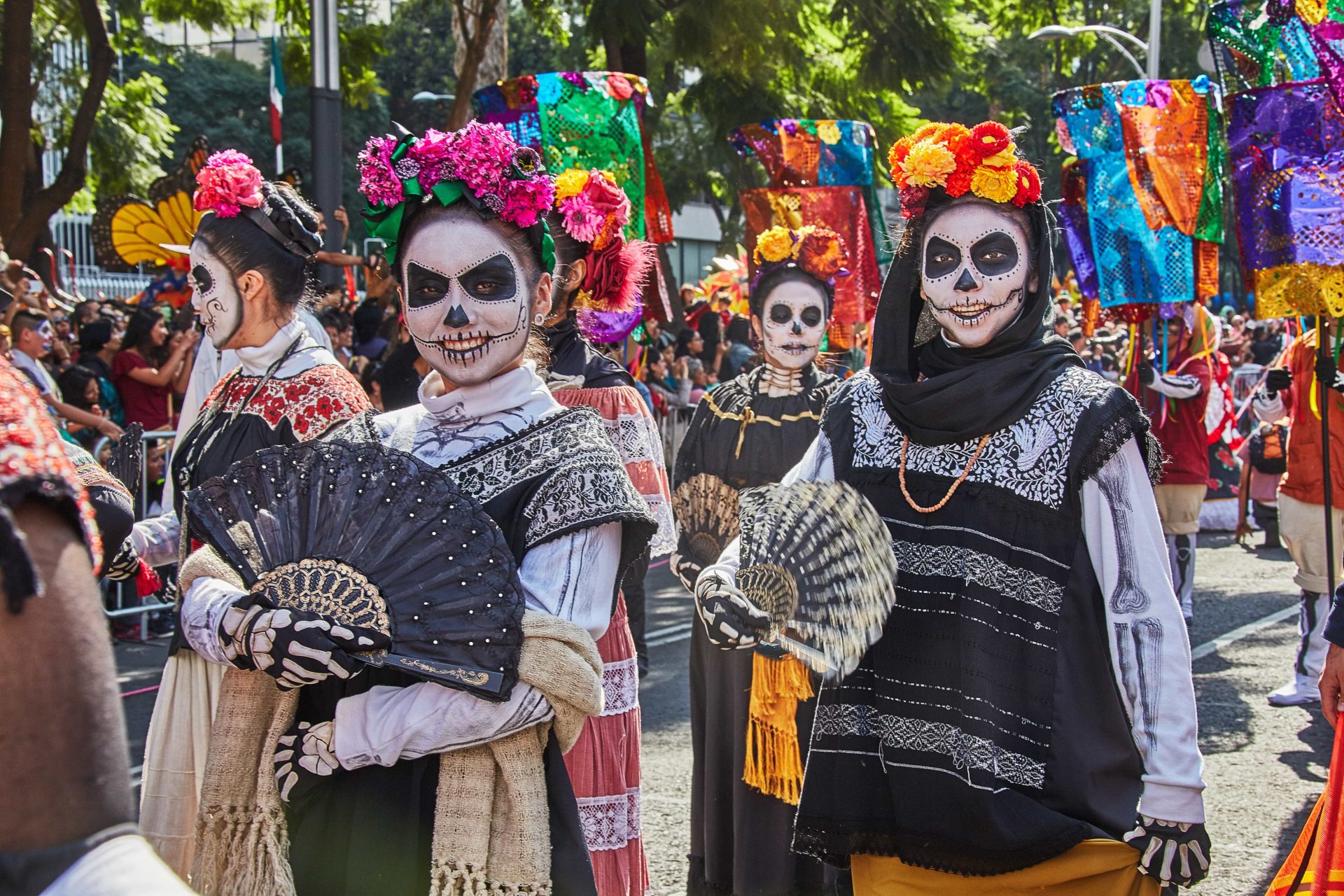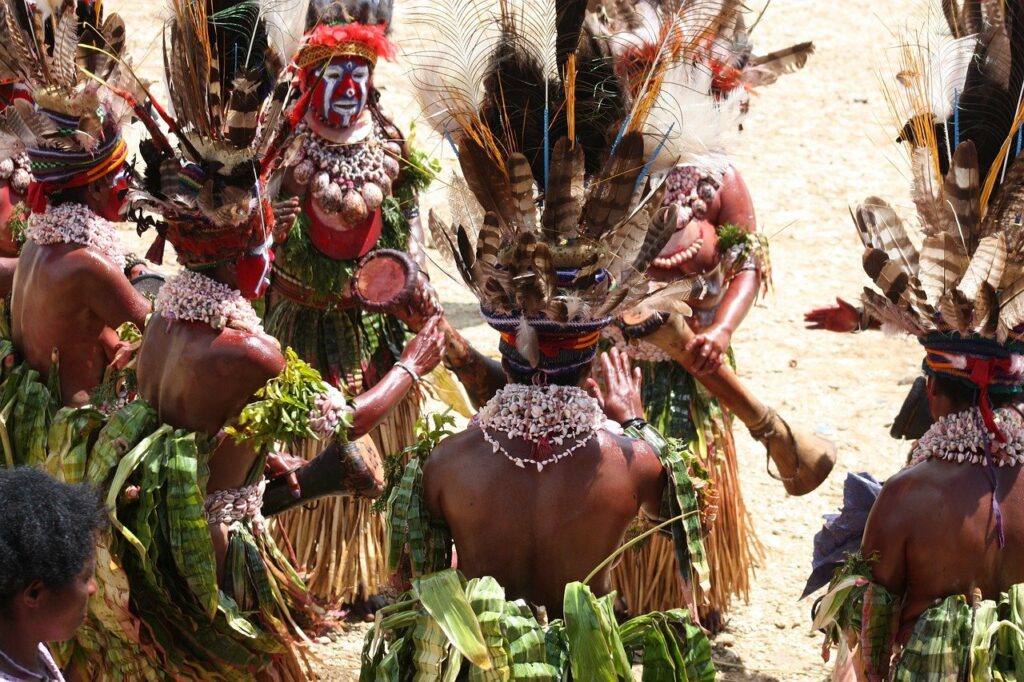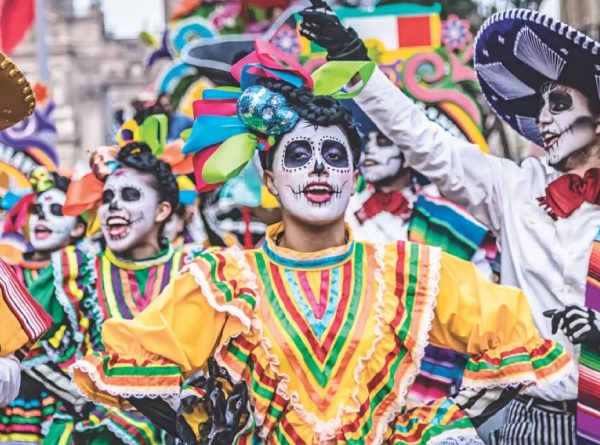Death is a universal reality that affects all of us at some point. While grieving the loss of a loved one is always a painful experience, funeral traditions vary widely across different cultures. From elaborate rituals to joyous celebrations, funeral and mourning ceremonies worldwide reflect the beliefs, values, and customs of the communities that practice them. This article explores five fascinating funeral and mourning traditions worldwide.
Day of the Dead in Mexico: Funeral Traditions
The Day of the Dead is a colorful and lively funeral tradition celebrated in Mexico on November 1st and 2nd. The festival is a time for families to remember and honour their loved ones who have passed away. Families create altars and decorate them with candles, photographs, and offerings such as flowers, food, and tequila. The belief is that the spirits of the deceased return to the living world during this time. Because of that, families try to create a welcoming environment for them.
The streets are filled with music, parades, and costumes. People dress up in colorful and elaborate costumes and face paint, often as skeletons or skulls, and dance and sing to celebrate life and death. The atmosphere is joyful and festive, with food, drinks, and music being shared among family and friends. At the end of the festival, families visit the cemetery to clean and decorate the graves of their loved ones. They leave flowers, candles, and offerings.

Sky Burials in Tibet
Tibetan funeral tradition involves a sky burial, where the body is taken to a high mountain and left for vultures to devour. This practice is based on the belief that the soul has already left the body, so preserving it is unnecessary. Instead, it is returned to nature, allowing it to decompose naturally. Sky burials are a way to give back to nature and honor the circle of life. It’s also believed that vultures aid in the soul’s journey, releasing it from the body and guiding it to the next life. It is an essential part of Tibetan funeral tradition and a sign of respect for the deceased.

Jazz Funerals in New Orleans
The jazz funeral is a festive funeral tradition that honors the deceased in New Orleans, deeply rooted in the city’s African American culture since the early 1900s. A brass band leads the funeral procession, with family and friends dancing and singing to celebrate the person’s life.
The procession often gathers more participants while continuing through the streets of New Orleans. At the cemetery, the mood shifts to upbeat jazz music, and the celebration continues with food, drinks, and pieces shared among mourners. This funeral tradition celebrates the deceased’s life and sends them off with joy and positivity.

Endocannibalism in Papua New Guinea
In some communities in Papua New Guinea, traditional funeral traditions involve endocannibalism. This practice stems from the belief that the deceased’s spirit continues to live in their body, and consuming it is a way to keep them close and present in the community. Although outsiders may find it shocking, endocannibalism is an integral part of the culture in these communities.
Nowadays, this funeral tradition is uncommon and often replaced with mock feasts, where a pig or another animal serves as a substitute for the human body. However, endocannibalism still reflects the strong connection between the living and the dead in the beliefs and values of these communities.

Burning of the Dead in Bali
Bali’s traditional funeral practice involves burning the dead in a Ngaben ceremony. The ceremony aims to release the soul from the body and allow it to move on to the afterlife. The mourners place the body of the deceased in an elaborate. Then they ornate the coffin and carry it to the cremation site.
At the cremation site, the mourners place the casket on a tower and set it on fire, believing that the heat and smoke will help release the soul from the body. The ceremony features music, chanting, and offerings to honor the deceased and their journey into the afterlife.

Summary
Funeral and mourning traditions show a community’s beliefs and values. Each practice offers a unique perspective. Whether through music, dance, food, or ceremony, these traditions help us remember and honour our loved ones who have passed away. They also provide a way to find meaning and comfort in the face of loss.
Check out other articles:

